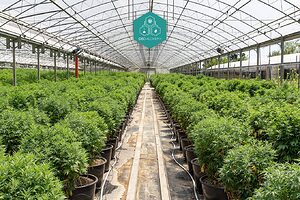Sativa, a type of cannabis plant, is recognized for its uplifting and energizing effects. It is often contrasted with cannabis indica, which is known for its relaxing and therapeutic qualities. If you’re searching for ‘sativa meaning,’ you’re likely looking for a clear explanation of what sets this variety apart. In this article, we’ll delve into the definition, characteristics, and benefits of sativa, giving you a comprehensive understanding of its unique properties.
Key Takeaways
- Cannabis sativa is characterized by its tall, slender plants, high THC levels, and uplifting effects, making it beneficial for daytime use and social interactions.
- Sativa strains are commonly used for therapeutic purposes, such as alleviating mood disorders and fatigue, while also enhancing creativity and focus.
- The cultivation of sativa plants requires specific environmental conditions, including warm climates and well-draining soil, to optimize growth and potency.
Defining Sativa
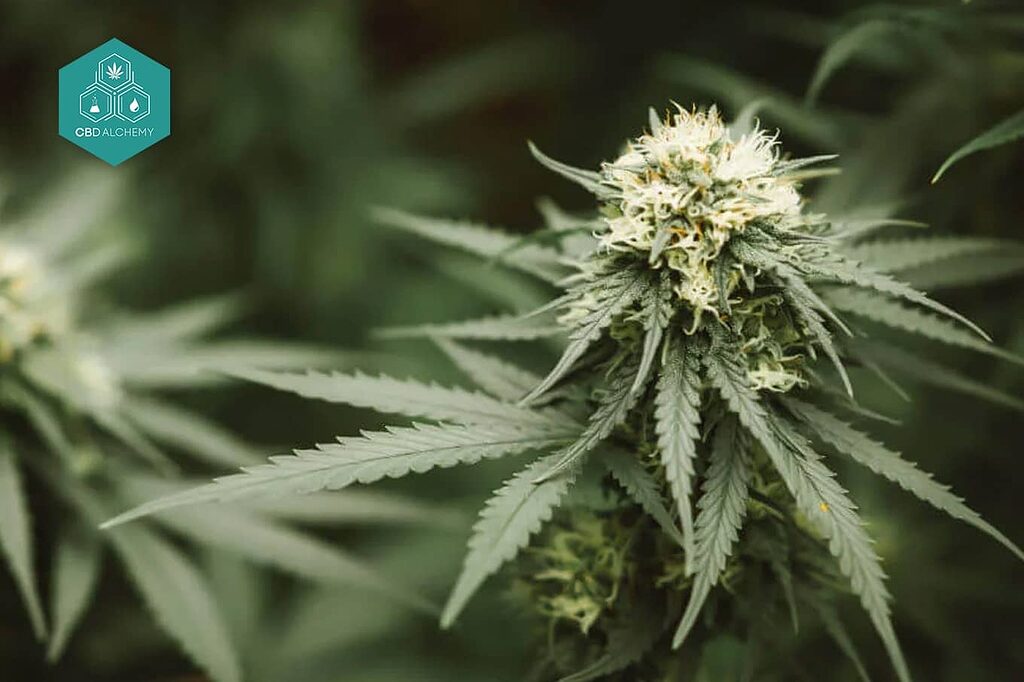
Cannabis sativa, a yearly flowering herb in the Cannabaceae family, was first identified by Carl Linnaeus in 1753. This classification specifically refers to its unique structural attributes. Sativa cannabis varieties exhibit distinct physical traits and psychoactive effects when compared to their indica relatives within the cannabis genus.
The stature of sativa plants is notably taller and more slender with lighter green foliage than that of the bushier and darker-leaved indica plants. The cannabis indica plant is known for its higher CBD content and traditional uses for pain relief and sleep aid. Each strain of the cannabis plant presents singular characteristics which distinguish them from other strains, encompassing those classified as either indica or sativa, along with cannabis ruderalis types.
By categorizing into indica, sativa, and hybrid strains, users gain insight into the differing impacts each variety may have due to its distinctive properties related to consumption experiences associated with consuming products derived from these different classifications of cannabis plants.
Origin of Cannabis Sativa
The Cannabis sativa plant is believed to have its origins in Southeast Asia, with historical connections stretching across Central and South America as well as the warmer areas of Eastern Asia that offer perfect conditions for growth. Traditional regions such as Asia, Anatolia, and Northern Africa are home to landrace strains of sativa which have evolved naturally without any interference from selective breeding by humans.
Cannabis sativa is classified into subspecies such as Cannabis sativa subsp. sativa (industrial hemp) and Cannabis sativa subsp. indica (marijuana). These subspecies have implications for medicinal use and their ability to absorb heavy metals and contaminants from the environment, raising important safety considerations for hemp-derived products.
Dating back 12,000 years when it was first domesticated, cannabis has been intertwined with human history for millennia. Strains of sativa flourish best in hot and arid climates like those found on the Northeastern plains and within the Himalayan region. This highlights both their capacity to adapt to different environments and their longstanding cultural importance.
History of Cannabis
Cannabis has a rich and diverse history that spans thousands of years. The earliest recorded use of cannabis dates back to ancient China, where it was revered for its medicinal, spiritual, and recreational properties. Ancient texts from China describe the use of cannabis in treating various ailments, highlighting its significance in traditional medicine.
The plant’s influence extended to ancient India, where it was an integral part of religious rituals and Ayurvedic medicine. Known as “bhang,” cannabis was consumed during spiritual ceremonies to induce a state of euphoria and enhance meditation. Similarly, in ancient Egypt, cannabis was used for its therapeutic benefits, with evidence suggesting its application in treating inflammation and glaucoma.
In ancient Greece, cannabis was valued for its medicinal properties, particularly in alleviating pain and inflammation. The Greek physician Dioscorides documented its use in his medical texts, further cementing its role in ancient medicine.
The 19th century marked the introduction of cannabis to the Western world, where it gained popularity for its medicinal uses. Physicians prescribed cannabis for a variety of conditions, including migraines, insomnia, and gastrointestinal disorders. However, the 20th century saw a shift in perception, with many countries prohibiting its use due to concerns about its psychoactive effects.
In recent years, there has been a growing movement to legalize cannabis for both medicinal and recreational use. Countries around the world are recognizing its potential benefits, leading to a wave of legalization and acceptance. Today, cannabis is increasingly seen as a legitimate treatment option for a range of medical conditions, reflecting its enduring legacy and evolving status in modern society.
Physical Characteristics of Sativa Plants
Sativa plants typically surpass 3 meters in height and present a tall, lean stature compared to their indica counterparts. They possess elongated growth patterns and sport narrow, pale green leaves. Cannabis sativa plants generally require a longer maturation period compared to indicas. Such physical characteristics have significant implications for their developmental cycle as well as the conditions they require to thrive.
The lofty and svelte configuration of sativa plants is an evolutionary response to hot climates, aimed at enhancing exposure to sunlight, promoting better airflow, and facilitating light penetration—factors essential for effective photosynthesis and overall plant vitality.
Chemical Compounds in Sativa Strains
In strains of cannabis sativa, the primary chemical compounds include THC (tetrahydrocannabinol) and CBD (cannabidiol). THC is notorious for its psychoactive effects while CBD offers medicinal advantages. The ratio of CBD to THC in sativa varieties is Lower, which means that these strains tend to contain more THC.
Due to this increased level of THC, sativa variants are powerful and commonly associated with an uplifting and energizing influence. Such potency plays a significant role in affecting the user’s experience by providing marked psychoactive impacts.
Effects of Sativa Strains

Sativa strains are renowned for their ability to elevate mood and provide an energy boost, eliciting sensations of joy and a heightened sense of well-being. Their invigorating properties make them perfectly suited for use during the day or at social events.
Sativa strains promote increased mental sharpness and focus, making them attractive options for individuals engaged in creative endeavors or professions that require intense concentration.
Energizing and Uplifting
Renowned for their invigorating effects, sativa strains are ideal for daytime consumption. These strains can sustain wakefulness and sharpness, offering an energy surge when needed. They’re commonly preferred in social scenarios as they have the ability to improve mood and encourage sociability.
In a therapeutic context, sativa varieties aid in managing depression, alleviating headaches, reducing nausea, and stimulating appetite due to their enlivening attributes. Take Sour Diesel as an example. It’s recognized by its distinct diesel scent paired with capabilities that elevate mood and vitality.
Enhancing Creativity and Focus
Green Crack is renowned for its ability to boost mental clarity and focus, which makes it excellent for creative endeavors and productive tasks. It provides a burst of energy and intense concentration that’s particularly useful during the day, gaining favor with individuals engaged in imaginative ventures.
The capacity of sativa strains to augment focus is advantageous not only for artistic efforts but also for professional tasks that require prolonged attention and cognitive acuity. This quality renders them essential for creatives such as artists and writers, as well as other professionals who require heightened mental sharpness.
Potential Side Effects
While sativa strains offer advantages, they can also induce adverse reactions such as anxiety and paranoia in certain users, especially when consuming strains with high levels of THC. This variability in effects highlights the importance of tailoring cannabis use to the individual.
It is essential for users to exercise caution and be aware of their personal responses when using sativa strains. Adopting an approach that considers individual needs can help lessen any possible negative outcomes while improving the overall cannabis experience.
Uses and Applications of Sativa
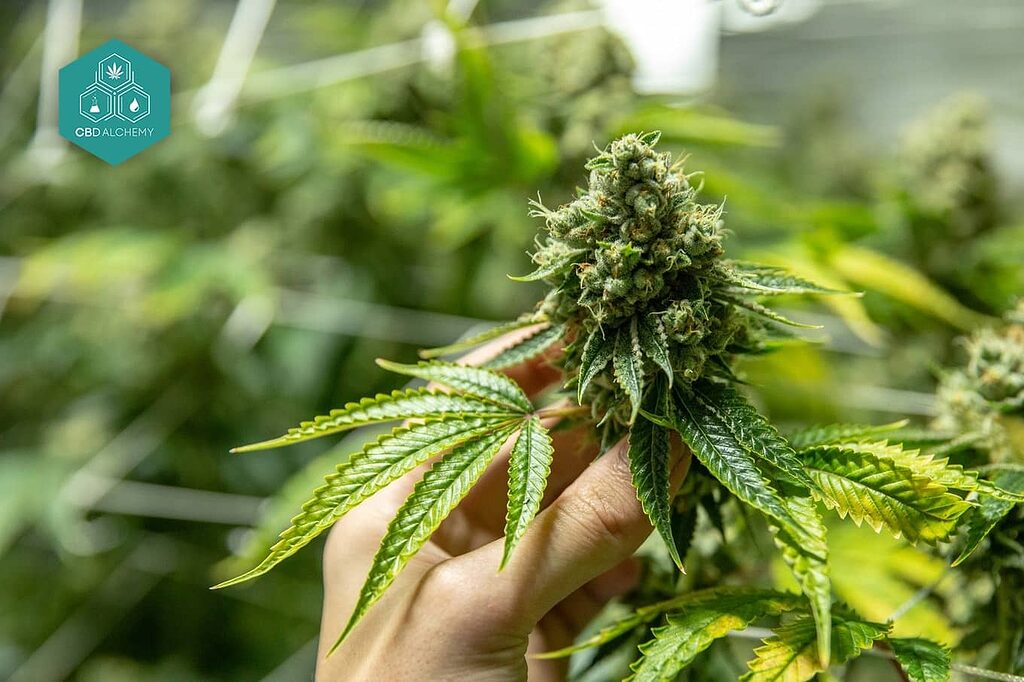
Primarily utilized for their therapeutic benefits, sativa strains are recognized for mitigating symptoms of anxiety and depression. Users often experience a reduction in stress levels and an increase in focus, which can lead to heightened creativity and improved productivity. Cannabis sativa also plays a significant role in various sectors such as textiles, agriculture, and the production of biofuels.
In terms of leisurely consumption, strains derived from cannabis sativa deliver energizing effects that are perfectly suited for social scenarios or endeavors that require creative thinking. These strains offer numerous advantages tailored to both medical applications and recreational enjoyment, thereby serving a broad spectrum of user inclinations and demands.
Medicinal Uses
Strains of sativa are favored for their energizing impact, particularly when addressing ailments like fatigue and mood-related disorders. These strains fend off stress and tiredness while offering a boost of energy without inducing significant drowsiness. Take Blue Dream as an example. It is respected for its ability to alleviate pain yet allows one to stay awake, making it ideal for consumption during the day.
Small quantities of THC have been known to elevate motivation levels and sharpen focus, thus rendering sativa varieties useful in activities that require creativity. Beyond imparting distinctive flavors and scents, terpenes play a crucial role in augmenting the medicinal benefits of these sativa strains.
Recreational Uses
Often selected for their ability to elevate mood and increase energy, sativa strains are frequently used to enhance social interactions and creative endeavors. Their stimulating impact is known for fostering artistic energies, making them a favored choice during events or when engaging in imaginative activities.
Sativa strains excel at improving creativity and concentration, which is why they are highly regarded among individuals such as artists, musicians, and various creative practitioners who seek an uplift in their mental clarity and inventiveness.
Comparing Sativa to Indica for Medical Use
Sativa plants typically exhibit a tall and slender structure with leaves that are light green in color. In contrast, indica plants have a shorter and more robust stature, featuring broad leaves that boast a deeper shade of green. When it comes to cannabinoid content, sativa strains often possess lower levels of CBD while having higher concentrations of THC compared to their indica counterparts. This variation influences the medicinal benefits they provide. Cannabis indica strains are commonly associated with effects like pain relief, relaxation, and drowsiness, which appeal to users seeking a full body high.
When assessing the therapeutic effects offered by indica and sativa strains, drawing direct comparisons may not be particularly insightful as there isn’t an evident distinction between them. It is advisable for patients to focus on identifying cannabis strains which effectively target their unique health conditions and alleviate specific symptoms they are experiencing.
The development of new cannabis strains frequently aims at optimizing certain qualities like pain relief or anti-inflammatory properties. For medical purposes, selecting an appropriate strain tailored to address individual medical needs is essential for achieving effective treatment outcomes.
Popular Sativa Strains
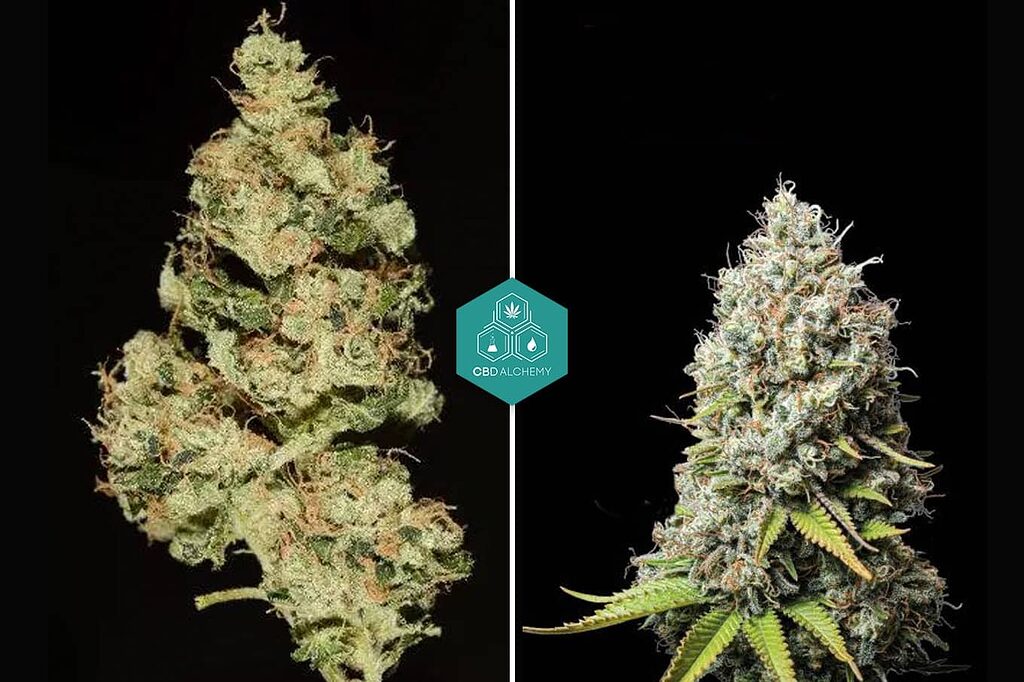
We will delve into the reasons behind the widespread admiration for certain sativa strains in cannabis circles, specifically Blue Dream, Sour Diesel, and Green Crack. Each of these varieties possesses distinctive traits that have captured the attention of marijuana aficionados.
In an effort to comprehend what makes these popular sativa strains so appealing, we’ll examine each one closely to unpack their individual appeal among cannabis users.
Blue Dream
The hybrid Blue Dream, with a sweet berry scent complemented by citrus and spice notes, provides an equilibrium of euphoric and relaxing effects. This makes it highly adaptable for various uses. Comprising 60% sativa and 40% indica, this strain delivers a well-rounded experience that attracts numerous users.
Owing to its capacity to induce both relaxation and invigoration simultaneously, Blue Dream ranks as one of the favored sativa strains. It accommodates the needs of both medicinal consumers and recreational enthusiasts due to its harmonious balance of effects, thereby appealing to a broad range of individuals.
Sour Diesel
Sour Diesel stands out for its distinctly potent and energizing qualities, accompanied by a strong diesel-like scent that is sharp with hints of citrus. This strain delivers an intense cerebral high, making it the go-to choice for individuals in search of a boost in creativity and vigor—a trait highly valued by cannabis enthusiasts.
Favored especially for consumption during the day, Sour Diesel uplifts one’s spirits and aids in increasing efficiency. The combination of its singular fragrance and robust impact ensures an unforgettable encounter with this variety of cannabis.
Green Crack
Green Crack stands out for its potent ability to sharpen focus and provide an energy boost. This makes it highly effective in improving concentration and mental clarity, often favored by those engaged in creative or professional tasks. Due to these qualities, it is best utilized during the day.
The strain’s capacity to heighten attention and cognitive acuity renders it beneficial for individuals like artists, writers, and professionals who require prolonged periods of concentrated effort. Green Crack’s invigorating effects are well-suited for social events and artistic endeavors.
Growing Sativa Plants
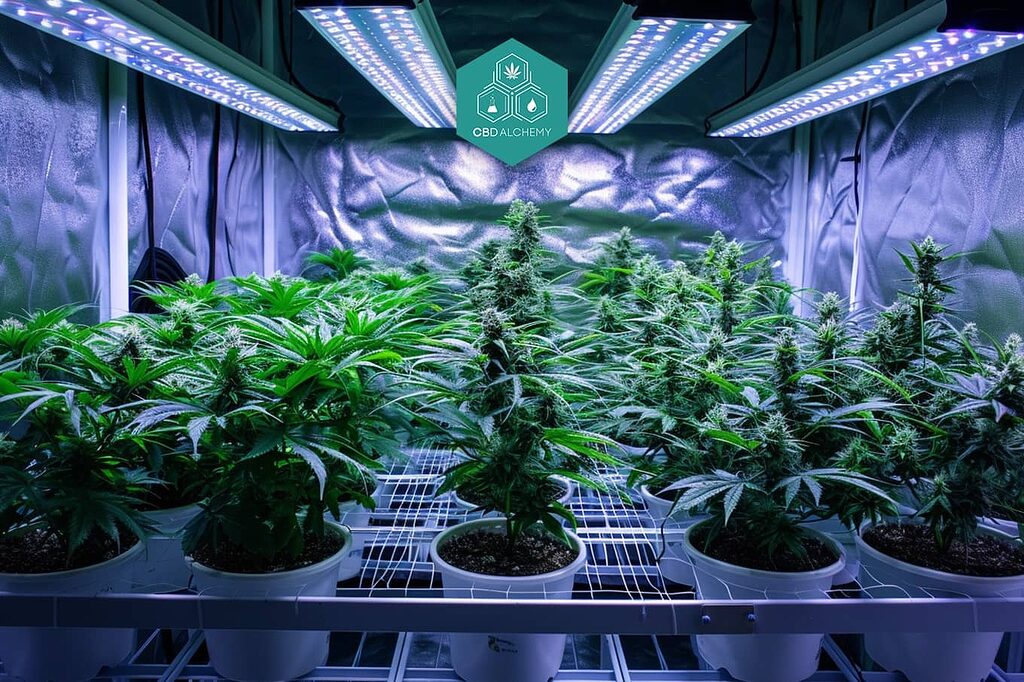
To ensure the best growth and yield from sativa plants, particular environmental conditions must be met. The climate and soil makeup where they grow profoundly influence the resulting chemical profile of cannabis varieties. Meanwhile, landrace strains—unaltered pure forms of sativa or indica—have adapted to their original regional climates through evolution.
Expertise in the cultivation of sativa plants is essential for success, requiring knowledge about their unique growth behaviors and habitat requirements. Ensuring optimal climate settings, appropriate soil properties, as well as controlling pests and diseases are all critical factors that determine both quality and strength of the harvested cannabis. Hybrid cannabis plants, a product of crossbreeding indica and sativa strains, are prevalent in the market due to the rarity of pure strains and are cultivated to target specific medical use cases and deliver a variety of effects.
Ideal Climate and Soil Conditions
Typically, sativa plants flourish when grown in warm environments that are well-supplied with sunlight. These plants do best in arid conditions where the humidity level stays between 40-60%, which helps to avert leaf desiccation and supports effective photosynthesis processes. The optimal pH range for their soil is mildly acidic to neutral, spanning from 5.8 up to 6.5.
For sativa plants to achieve strong growth and potent cannabinoid synthesis, including THC and CBD, it’s essential they have access not only to ample sunlight but also soils that both drain efficiently and are abundant in organic materials.
Growth Cycle and Harvesting
Sativa strains necessitate abundant light levels to undergo efficient photosynthesis and achieve optimal growth. These plants thrive in soil that is not only well-drained but also rich in organic nutrients, accommodating their characteristic tall and slender stature. To their indica counterparts, sativa varieties demand an extended period for maturation, often needing a longer cycle of growth that corresponds with their affinity for warmer environments.
The protracted maturing process associated with sativa plants calls for growers to exercise patience and attentiveness in cultivation practices. This investment of time frequently pays off as the yield typically consists of high-quality cannabis renowned for its robust effects and distinctive scent profiles.
Common Pests and Diseases
Sativa plants are vulnerable to harmful pests such as spider mites and aphids, which inflict considerable harm by consuming the plant tissues. Diseases like powdery mildew thrive in environments with elevated humidity levels and can severely jeopardize sativa growth. It is vital to frequently inspect for indicators of pest presence and disease outbreaks, while also taking appropriate steps to curtail these risks.
To safeguard against these threats and secure the well-being of sativa plants, it’s important to put preventative strategies into practice and preserve ideal cultivation conditions. This proactive approach contributes significantly towards promoting robust growth and productivity in sativa strains.
The Role of Terpenes in Sativa Strains
Terpenes, significant non-cannabinoid elements in cannabis sativa, play an essential role in shaping both its scent and impact. The presence of certain terpenes like myrcene is a key determinant for categorizing a particular type of cannabis as belonging to the sativa strain category. These compounds are largely responsible for crafting the distinct aromatic essence and the psychoactive outcomes that are typically associated with sativa strains. Historically, indica and sativa cannabis were classified based on their physical and psychoactive characteristics, with contributions from botanists like Linnaeus and Lamarck.
Gaining insight into how terpenes function within sativa varieties deepens our understanding of the intricate synergy among various substances that characterize consumption experiences involving cannabis. Not only do these fragrant molecules enhance the olfactory allure of cannabis, but they also adjust its effects on users.
What Are Terpenes?
Terpenes, which are fragrant compounds found in plants such as cannabis, have a substantial impact on the characteristics of different cannabis strains. They contribute to both the scent and taste aspects of these strains. Terpenes enrich the therapeutic and mind-altering qualities that various strains possess.
When consumers grasp the significance of terpenes within cannabis varieties, they can choose with greater precision based on their preferred outcomes and tastes. This knowledge allows for a more discerning selection regarding which particular strain aligns best with an individual’s needs or desires.
Key Terpenes in Sativa Strains
Sativa strains are often characterized by the presence of Limonene, a terpene that provides an energizing boost and emits a citrus fragrance. Another prevalent terpene in sativa varieties is Pinene, which can aid in maintaining alertness and improving memory retention. The unique aromatic signature of these strains is distinguished by their spicy and earthy notes.
These pivotal terpenes play a significant role not just in shaping the distinctive scent profile of sativa strains, but also amplify their invigorating and mood-lifting properties. This makes them particularly favored among individuals looking for such effects.
The Entourage Effect
The concept of the entourage effect is centered around the synergy between different compounds within cannabis, which serve to boost its therapeutic properties. This interaction occurs as cannabinoids and terpenes mutually modulate their effects, shaping the ultimate impact that cannabis has on users. The result of this synergistic effect could potentially heighten the efficacy of cannabis for a range of therapeutic purposes.
When individuals utilize cannabis strains taking advantage of the entourage effect, they can encounter more intense and advantageous outcomes. This not only improves medicinal applications, but also enhances recreational experiences with cannabis.
Safety and Toxicity of Cannabis
Cannabis is generally considered to be a safe substance, but like any substance, it can have negative effects if used excessively or in certain individuals. The main psychoactive compound in cannabis, THC, can cause a range of effects, including euphoria, relaxation, and altered perception. However, it can also lead to adverse reactions such as anxiety, paranoia, and short-term memory loss, particularly in high doses.
Physically, cannabis can increase heart rate and blood pressure, and decrease coordination and reaction time. These effects underscore the importance of responsible use, especially when engaging in activities that require full cognitive and motor function, such as driving.
It’s also crucial to consider potential interactions with other substances. Cannabis can interact with medications, potentially altering their effectiveness or leading to unexpected side effects. Additionally, combining cannabis with alcohol can amplify its effects, increasing the risk of negative outcomes.
Certain individuals, particularly those with a history of mental health conditions, may be more susceptible to the negative effects of cannabis. For these individuals, it’s important to approach cannabis use with caution and consult with a healthcare professional to ensure it is safe and appropriate for their specific circumstances.
Overall, while cannabis has a relatively favorable safety profile, understanding its potential risks and using it responsibly is key to minimizing negative effects and maximizing its benefits.
Choosing the Right Strain for You
With so many different strains of cannabis available, choosing the right one for your needs can be a daunting task. Here are a few things to consider to help you make an informed decision:
- Indica Strains: Indica strains tend to be more relaxing and sedating, making them ideal for evening use or for those seeking relief from insomnia or chronic pain. These strains are known for their calming effects, which can help reduce anxiety and promote restful sleep.
- Sativa Strains: Sativa strains tend to be more energizing and uplifting, making them suitable for daytime use. These strains are favored for their ability to enhance creativity, focus, and social interactions. If you’re looking to boost your mood and stay productive, sativa strains might be the right choice for you.
- Hybrid Strains: Hybrid strains offer a balance of both indica and sativa effects, providing a versatile option for users. Depending on the specific blend, hybrids can be tailored to meet a variety of needs, from pain relief to increased energy and focus.
- THC and CBD Content: Consider the THC and CBD content of the strain. THC is the primary psychoactive compound, while CBD is known for its therapeutic benefits without the high. Strains with higher THC levels are more potent and can provide stronger psychoactive effects, while those with higher CBD levels are often used for medicinal purposes.
- Cannabinoids and Terpenes: Beyond THC and CBD, other cannabinoids and terpenes play a significant role in the effects of a strain. Terpenes, in particular, contribute to the aroma and flavor of the strain and can enhance its therapeutic properties. Understanding the terpene profile can help you choose a strain that aligns with your desired effects.
- Specific Effects: Think about the specific effects you are looking for, such as pain relief, anxiety reduction, or increased creativity. Different strains are known for their unique benefits, so identifying your primary goals can guide your selection.
- Consult Professionals: Consider consulting with a healthcare professional or a knowledgeable budtender to help you choose the right strain for your needs. They can provide personalized recommendations based on your health history and preferences.
It’s also important to remember that everyone’s body is different, and what works for one person may not work for another. Starting with a low dose and gradually increasing as needed can help you find the right balance without overwhelming effects.
Additionally, consider the quality of the cannabis, the growing conditions, and the processing methods, as these factors can impact the final product. By taking these considerations into account and doing your research, you can find a strain that meets your needs and provides the desired effects.
Summary
To summarize, Cannabis sativa is distinguished from other cannabis strains by its unique range of effects, uses, and advantages. Known for its stimulating and mood-elevating attributes, it has become a popular choice among users who consume cannabis for both health-related and leisure purposes. A profound understanding of the roots, features, and chemical compounds inherent in sativa strains deepens our appreciation for this exceptional variety.
As advancements continue to shape the cannabis industry, the comprehension and utilization of sativa varieties are set to broaden further. This growth presents fresh prospects for consumers seeking therapeutic benefits or those aspiring to augment their creative endeavors—solidifying Cannabis sativa as an adaptable and beneficial contender within the realm of cannabis options.
Frequently Asked Questions
What are the main effects of sativa strains?
Strains of sativa are known for their stimulating and invigorating effects, which make them perfect for use during the day to boost creativity and concentration. Consequently, they are favored by those looking to heighten motivation and achieve a clearer state of mind.
How do sativa strains differ from indica strains?
Sativa strains are characterized by their tall, slim growth and light green leaves, typically having higher THC and lower CBD levels than indica strains. This distinction influences their effects, with sativas generally providing a more uplifting experience.
What are some popular sativa strains?
Some popular sativa strains are Blue Dream, Sour Diesel, and Green Crack, each offering distinctive effects and characteristics. These strains are well-regarded in the cannabis community for their uplifting and energetic qualities.
Are there any potential side effects of using sativa strains?
Yes, high-THC sativa strains can lead to anxiety and paranoia in some users, indicating the need for cautious consumption due to individual variability in responses.
What role do terpenes play in sativa strains?
Terpenes are essential in shaping the scent and impacts of sativa strains, augmenting the total experience as well as medicinal advantages by working synergistically with cannabinoids.


